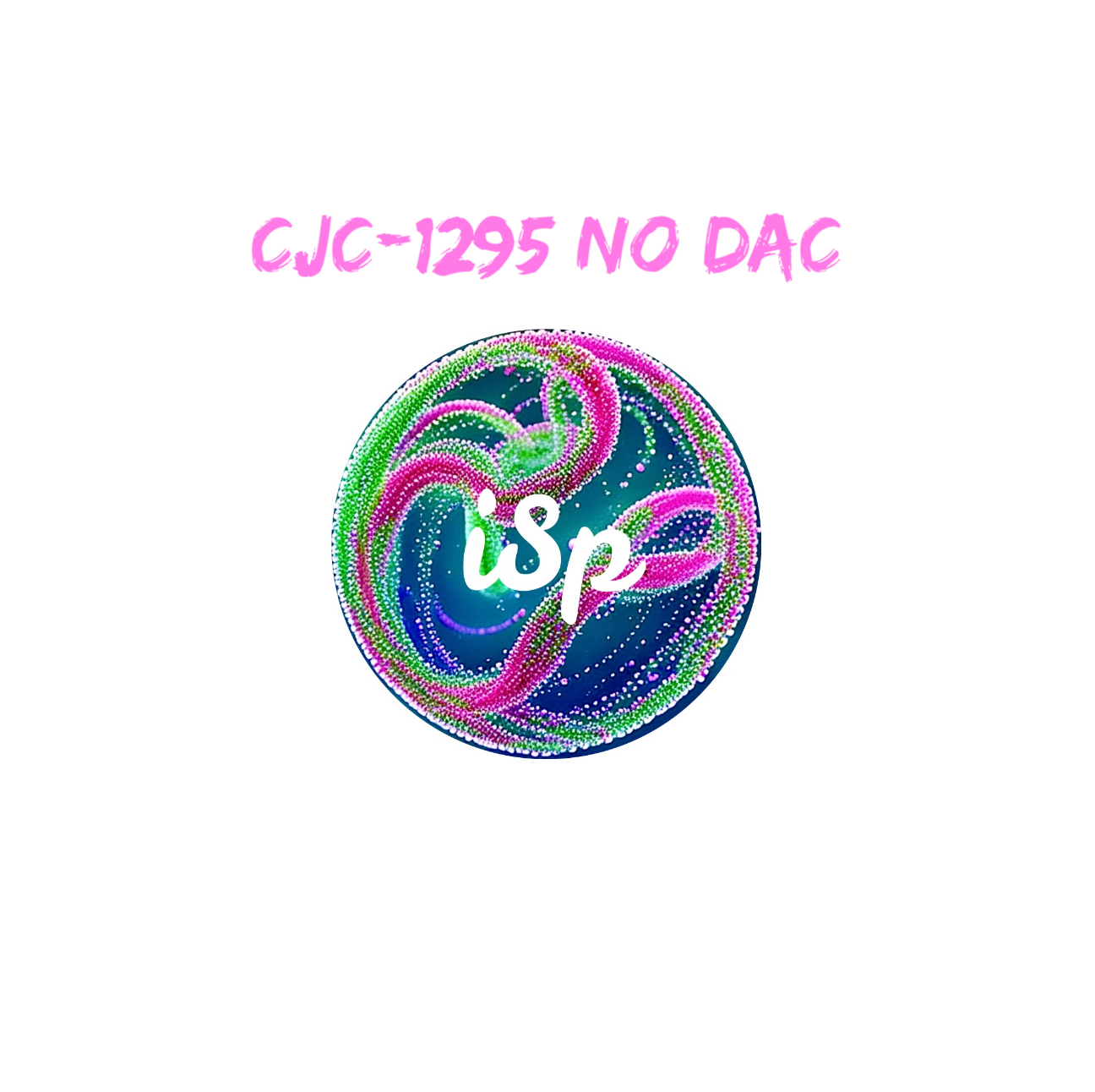Unlock vitality, use code APOLLO10 @ APOLLO PEPTIDE SCIENCE. iScream10 @ integrative peptides & the dna company

CJC-1295 NO DAC
Description – CJC-1295 NO-DAC
CJC-1295 NO-DAC is a synthetic peptide developed to be an analogy of growth hormone-releasing hormone (GHRH)1. The 29 amino acid sequence is derived from GRF(1-29), a naturally occurring growth hormone-releasing factor. As its name implies, CJC-1295 no DAC lacks the ‘drug affinity complex’ described below2. This structural difference infers a shorter peptide half-life than its DAC-inclusive counterpart, which elicits a GH release profile that more closely reflects what occurs in nature. CJC-1295 no DAC is reported to be a potent agent for the stimulation of pulsatile growth hormone (GH) and IGF-1 release3. These biochemical actions have been shown to result in the promotion of lean body mass, enhanced strength, increased appetite, and improved quality of sleep in animal test subjects4.
Product Comparison – CJC-1295 NO-DAC
In spite of having a similar site of action, CJC-1295 no DAC (and CJC-1295 with DAC) does not stimulate GH production using the same biochemical pathway as the popular GH secretagogue GHRP-65. In light of this observation, it has been possible for researchers to administrate CJC-1295 species and GHRP-6 concurrently in order to achieve an additive positive effect on GH release.
Drug Affinity Complex – CJC-1295 NO-DAC
The drug affinity complex (DAC) is a chemical group fixed to CJC-1295 DAC that helps the peptide escape degradation by natural enzymes. By adding a component that gives CJC-1295 an affinity for albumin2, a naturally occurring protein in blood plasma, the peptide can achieve a much longer systemic half-life.
Preference for a long or short peptide half-life depends entirely on the research application of these agents.
Research products only, they are not for human consumption.
Synonyms:
CJC-1295; CJC-1295 no-DAC; CJC-1295 without DAC; Modified Growth Releasing Factor aminos 1-29; CJC1295 NO-DAC; Modified GRF (1-29); Mod GRF 1-29; Tetrasubstituted GRF (1-29);
Peer-Reviewed Sources:
Sackmann-Sala, L., Ding, J., Frohman, L. A., & Kopchick, J. J. (2009). Activation of the GH/IGF-1 axis by CJC-1295, a long-acting GHRH analog, results in serum protein profile changes in normal adult subjects. Growth Hormone & IGF Research, 19(6), 471-477.
Beals, J. M., & Shanafelt, A. B. (2006). Enhancing exposure of protein therapeutics. Drug Discovery Today: Technologies, 3(1), 87-94.
Teichman, S. L., Neale, A., Lawrence, B., Gagnon, C., Castaigne, J. P., & Frohman, L. A. (2006). Prolonged stimulation of growth hormone (GH) and insulin-like growth factor I secretion by CJC-1295, a long-acting analog of GH-releasing hormone, in healthy adults. The Journal of Clinical Endocrinology & Metabolism, 91(3), 799-805.
Alba, M., Fintini, D., Sagazio, A., Lawrence, B., Castaigne, J. P., Frohman, L. A., & Salvatori, R. (2006). Once-daily administration of CJC-1295, a long-acting growth hormone-releasing hormone (GHRH) analog, normalizes growth in the GHRH knockout mouse. American Journal of Physiology-Endocrinology and Metabolism, 291(6), E1290-E1294.
Cordido, F., Penalva, A., Dieguez, C., & Casanueva, F. F. (1993). Massive growth hormone (GH) discharge in obese subjects after the combined administration of GH-releasing hormone and GHRP-6: evidence for a marked somatotroph secretory capability in obesity. The Journal of Clinical Endocrinology & Metabolism, 76(4), 819-823.
ALL LITERATURE, INFORMATION, AND DATA, PROVIDED ON THIS WEBSITE ARE FOR INFORMATIONAL AND EDUCATIONAL PURPOSES ONLY.
Elevated Wellness by Ashley
Elevate your life with our bioactive peptides and mentoring approaches.
contact
sign up to be contacted
(234)203-1300 Text Only
© 2025. All rights reserved.
ashley.angeli@fora.travel
iscreampeptides@gmail.com
